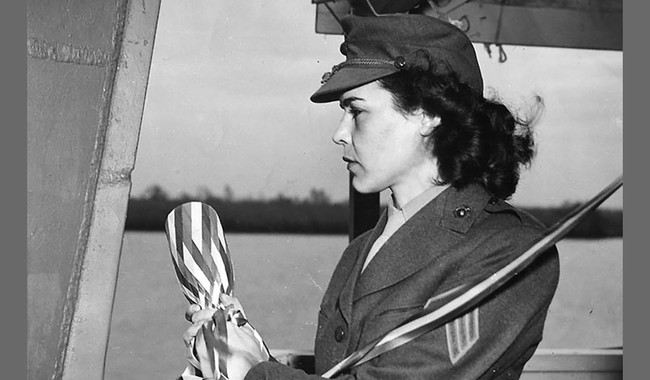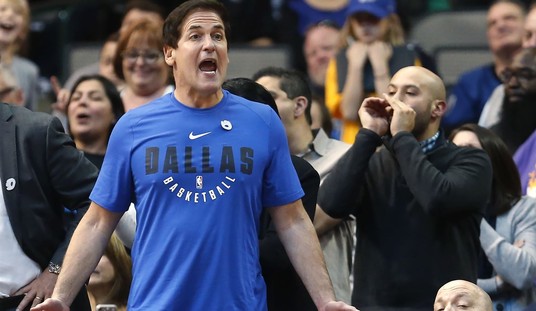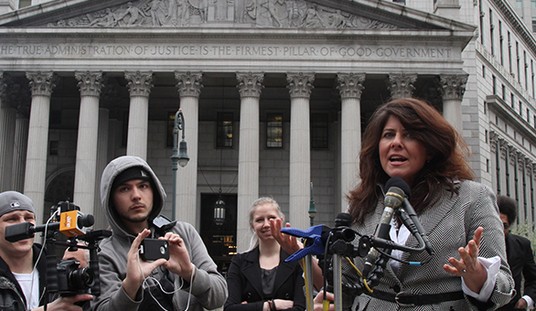Appearances Can Be Deceiving
The young man in the featured image above looks like a pretty regular young man, someone who is known mostly to his family and his Marine Corps buddies. He could be, and was, a typical, in most ways, son of Italian immigrants, of a type quite common in the Eastern Seaboard in the late Thirties and early Forties. But this man is much more than that: This is Gunnery Sergeant John Basilone, hero of Guadalcanal, the only enlisted Marine in World War 2 to be awarded both the Medal of Honor and the Navy Cross, and one of the Marine Corps’ great heroes, ranking up there with Chesty Puller and Dan Daly.
His Maculate Origin
John Basilone was born November 4, 1916, the sixth of ten children of Salvatore and Theadora Basilone. Salvatore was an immigrant from Colle Sannita, Italy, while Theadora was the American-born offspring of Italian immigrants, also from Colle Sannita. On his arrival in the U.S., Salvatore had settled in Raritan, New Jersey, where he met Theadora, then living in the neighboring town of Manville. While John was born during a two-year stay by the family in Buffalo, New York, when John was two, the Basilones returned to Raritan.
An adventurous lad, John dropped out of school at age fifteen and went to work as a caddy for a local country club until he was 18 when he began his military career by enlisting in the U.S. Army. Yes, that’s right – the Army.
Previously on RedState: Portrait of an American Hero: 'Jumpin' Joe' Beyrle
His Adventurous Career
On joining the Army in July of 1934, John was initially assigned close to home; his first duty station was with the 16th Infantry at Fort Jay, New York, which was actually on Governor’s Island in New York City. Looking for a more exciting post, John applied for and was granted reassignment to the 31st Infantry, then assigned to Fort William McKinley in the Philippines. It was during this tour that Basilone picked up the nickname “Manila John.”
On completion of his three-year hitch, John returned to Raritan and took a job driving a truck. After a while, this work palled, and John felt the itch to return to the Philippines; to that end, he decided to join the Marines, and enlisted in 1940. He served at Guantanamo Bay in Cuba until the beginning of World War 2, when he was eventually sent to the Solomon Islands as part of D Company, 1st Battalion, 7th Marines, in charge of a section of machine guns. The 7th Marine’s first action would be on an island in what Jack London described as The Terrible Solomons. That island was called Guadalcanal.
His One-Man War
During the battle for Henderson Field, which airfield was desperately needed by the Americans for air operations taking the rest of the island, then Staff Sergeant Basilone was in charge of a section of heavy machine guns, those being the Browning water-cooled M1917 machine gun – Great War relics, big, heavy, bulky guns requiring a lot of heavy equipment to operate but very reliable. On the night of October 24, 1942, Basilone’s unit came under attack by elements of the Japanese Sendai Division, who assaulted the Marine line with machine guns, mortars, and rifle fire. Several mass charges were hurled against the Marine line, and at several places, the Japanese actually penetrated the line and got into the Marine unit’s rear.
The attacks continued for two days.
At one point, the Marine resupply was cut off by Japanese infiltrators. Staff Sergeant Basilone, realizing the guns were running low on ammunition, single-handedly fought through to a resupply point, and brought ammo back to the beleaguered guns. Moving a reserve gun into the line, John personally fought that gun until it ran out of ammo and then, for some time, actually held off the Japanese assault with a .45 and a machete.
At the end of the second day, the Sendai Division had been virtually annihilated. Of the men in D Company, Basilone and one other Marine were still fit for further duty.
Gunny Basilone’s Medal of Honor citation reads:
For extraordinary heroism and conspicuous gallantry in action against enemy Japanese forces, above and beyond the call of duty, while serving with the 1st Battalion, 7th Marines, 1st Marine Division in the Lunga Area. Guadalcanal, Solomon Islands, on 24 and 25 October 1942. While the enemy was hammering at the Marines' defensive positions, Sgt. Basilone, in charge of 2 sections of heavy machine guns, fought valiantly to check the savage and determined assault. In a fierce frontal attack with the Japanese blasting his guns with grenades and mortar fire, one of Sgt. Basilone's sections, with its guncrews, was put out of action, leaving only 2 men able to carry on. Moving an extra gun into position, he placed it in action, then, under continual fire, repaired another and personally manned it, gallantly holding his line until replacements arrived. A little later, with ammunition critically low and the supply lines cut off, Sgt. Basilone, at great risk of his life and in the face of continued enemy attack, battled his way through hostile lines with urgently needed shells for his gunners, thereby contributing in large measure to the virtual annihilation of a Japanese regiment. His great personal valor and courageous initiative were in keeping with the highest traditions of the U.S. Naval Service.
Once the fight for Guadalcanal was won, the 1st Marine Division was withdrawn to Australia for some desperately needed rest and reorganization. Staff Sergeant Basilone, however, as a Medal of Honor recipient, was suddenly of greater value to the war effort Stateside, so he was ordered home on a War Bonds tour. One of the first stops on that tour was his hometown of Raritan, which held a parade in his honor on September 19, 1943. To this day, Raritan holds a “John Basilone Day Parade” on a Sunday each September.
While Medal of Honor recipients on War Bond tours doubtless got plenty of free drinks and accolades, by late 1943, Gunny Basilone was anxious to get back into action. Having already turned down a permanent assignment as an instructor as well as a commission, in December of 1943, he was finally awarded an assignment to a field unit, joining C Company, 1st Battalion, 27th Marine Regiment, 5th Marine Division at Camp Pendleton, California. There, while training with the company for deployment to the Pacific, John met and fell for Marine Corp Women’s Reserve Sergeant Lena Mae Riggi. They were married in July of 1944, seven months before the 5th Marine Division departed for Iwo Jima.

On February 19, 1945, the 5th Marines landed on Iwo Jima only to face withering fire and stubborn resistance from the Japanese. Gunny Basilone led his men forward into the teeth of Japanese machine guns, mortars, and artillery, single-handedly taking out at least one Japanese blockhouse and leading a Marine Sherman tank out of a minefield before being fatally hit by mortar fragments.
Gunny Basilone’s Navy Cross citation reads in part:
Shrewdly gauging the tactical situation shortly after landing when his company's advance was held up by the concentrated fire of a heavily fortified Japanese blockhouse, Gunnery Sergeant BASILONE boldly defied the smashing bombardment of heavy caliber fire to work his way around the flank and up to a position directly on top of the blockhouse and then, attacking with grenades and demolitions, single handedly destroyed the entire hostile strong point and its defending garrison. Consistently daring and aggressive as he fought his way over the battle-torn beach and up the sloping, gun-studded terraces toward Airfield Number 1, he repeatedly exposed himself to the blasting fury of exploding shells and later in the day coolly proceeded to the aid of a friendly tank which had been trapped in an enemy mine field under intense mortar and artillery barrages, skillfully guiding the heavy vehicle over the hazardous terrain to safety, despite the overwhelming volume of hostile fire. In the forefront of the assault at all times, he pushed forward with dauntless courage and iron determination until, moving upon the edge of the airfield, he fell, instantly killed by a bursting mortar shell.
On a personal note, my mother’s oldest brother was also a Marine, was on Iwo Jima, and took a Japanese bayonet through the shoulder only a few miles from where Gunny Basilone was killed. Carl was very reticent about the war, and the location of his injury is the only thing we know about it.
His Golden Years
John Basilone enjoyed no golden years since he died on that mountain on Iwo Jima. Lena Basilone stayed in the Marines and never remarried. You can find Gunny Basilone these days in Section 12, Grave 384, at Arlington National Cemetery. Lena Basilone is buried in the Riverside National Cemetery in Riverside, California; she was buried still wearing her wedding ring.
John’s legacy, though, lives on. I once spent a year and nine months maintaining a second residence in Raritan, NJ, Gunny Basilone’s hometown, and attended two consecutive Basilone Day parades. He is a real, major hometown hero, and believe me, the whole town turns out for the parade.
After one of these events, I had occasion to talk to a local man about my age, who was wearing a USMC cap. I asked him if he was originally from Raritan, and he answered in the affirmative.
“What happened in boot camp,” I asked him, “when they found out where you were from?”
“Oh boy,” he said, “I got a twenty-minute lecture from a DI on living up to Gunny Basilone.” And that's as it should be. America, perhaps now more than ever, needs heroes.
See Related: Hoge's Heroes: Five U of Georgia Students Dramatically Save Drowning Family Trapped in Submerged Car
John Basilone is one of the Corp’s major heroes, right up there with Chesty Puller, with whom he served, and Great War Marine hero Daniel Daly. Gunny Basilone’s iron courage, dedication, and determination should be an example for the ages.














